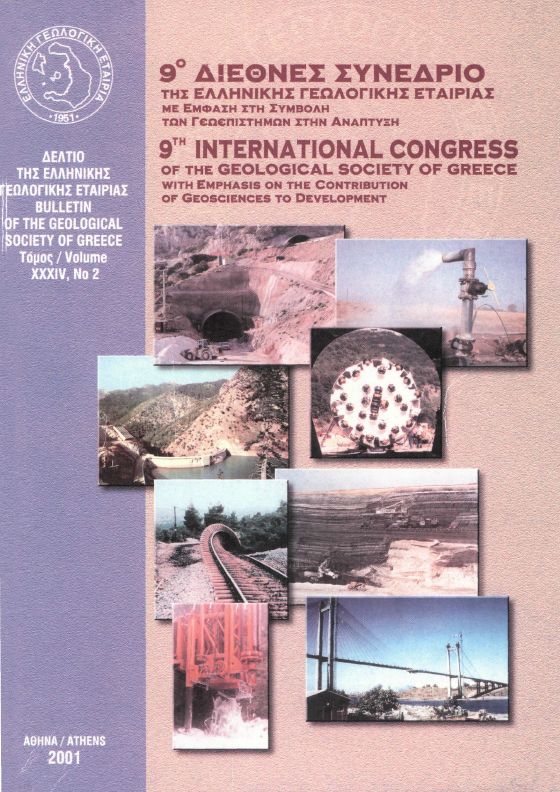RADIOCHRONOLOGICAL DATA WITH U/TH METHOD IN LAGUNAL /MARINE DEPOSITS OF THE NW PELOPONNESE, GREECE.
Abstract
Pleistocene lagoonal sediments exposed in northwestern Peloponneses were dated by U/Th methods in Cladocora coespitosa and in Area sp. samples, were collected from the southern part of the Rion - Antirrion and western end of the Corinth grabens, which were both formed in the upper Pliocene. Our dating results, indicate a Tyrrhenian age, Upper Pleistocene, and not Lower Pleistocene ages which were reported for these sediments up until now. In particular, the absolute ages from the collected samples from Ano Kastrisi are 203.6 ±11 kyr.s, from Arachovitika 164 ± 5.8 kyr.s and from Agios George Drepanou 88.1 ± 2.3 kyr.s. The above ages belong in isotopie stages 7, 6, 5 respectively. Based on the U/Th reported ages the calculated relatives rates of uplift are, 2.8 mnvyr"1 and 4.8 mnryr"1 for the areas of Ano Kastrisi and Agios George Drepanou respectively (south-eastern margin of the Rion - Antirrion graben) and 0.4 mnryr"1 Arachovitika samples (western end of Corinth graben). The calculated different relatives rates of uplift demonstrate probably that the two grabens had a different neotectonic and paleogeographic evolution.
Article Details
- How to Cite
-
Σταματόπουλος Λ., Κοντόπουλος Ν., Voltaggio, M., & Branca, M. (2018). RADIOCHRONOLOGICAL DATA WITH U/TH METHOD IN LAGUNAL /MARINE DEPOSITS OF THE NW PELOPONNESE, GREECE. Bulletin of the Geological Society of Greece, 36(2), 1064–1067. https://doi.org/10.12681/bgsg.16909
- Section
- Marine Geology and Oceanography

This work is licensed under a Creative Commons Attribution-NonCommercial 4.0 International License.
Authors who publish with this journal agree to the following terms:
Authors retain copyright and grant the journal right of first publication with the work simultaneously licensed under a Creative Commons Attribution Non-Commercial License that allows others to share the work with an acknowledgement of the work's authorship and initial publication in this journal.
Authors are able to enter into separate, additional contractual arrangements for the non-exclusive distribution of the journal's published version of the work (e.g. post it to an institutional repository or publish it in a book), with an acknowledgement of its initial publication in this journal. Authors are permitted and encouraged to post their work online (preferably in institutional repositories or on their website) prior to and during the submission process, as it can lead to productive exchanges, as well as earlier and greater citation of published work.






